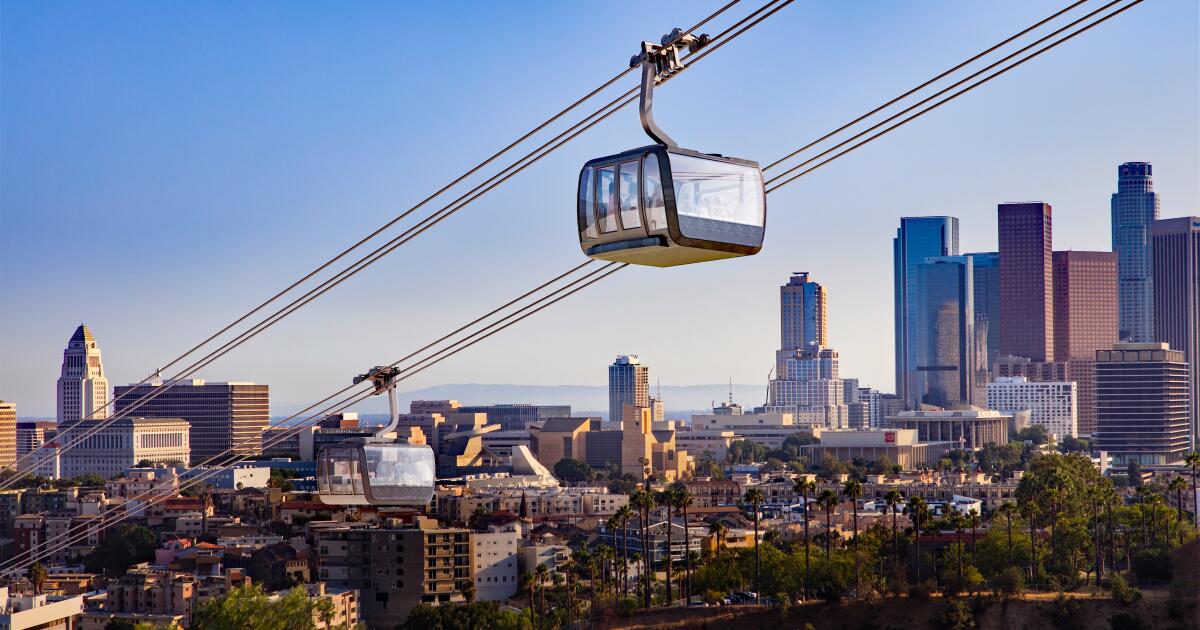Introduction to the Proposed Dodger Stadium Gondola Project
The proposed Dodger Stadium gondola hit a major roadblock Thursday, when a state appeals court rejected Metro’s approval of the environmental impact report for the project. The project, proposed in 2018 by former Dodgers owner Frank McCourt, requires approval from Metro, the Los Angeles City Council, Caltrans, and the state parks agency.
Background and Requirements
None of the other approvals have been obtained, and the court decision Thursday requires Metro to “set aside its certification of the EIR” and “set aside its approval of the project” until a revised environmental impact report can be completed. The gondola would run from Union Station to Dodger Stadium and would cost $385 million to $500 million to build and another $8 million to $10 million per year to operate and maintain, according to the report.
Financing and Operational Costs
Those costs, it said, could be covered by private bond financing, sponsorships, naming rights, and fares — although fans have been promised free rides to Dodger games. This financing model is designed to make the project viable without placing an undue burden on taxpayers or requiring significant public funding.
Legal Challenges
Metro approved the environmental impact report 15 months ago. The California Endowment and the Los Angeles Parks Alliance sued to throw out the report, on the basis Metro had not properly followed state environmental laws in approving it. The bid was denied by the Los Angeles Superior Court last August, but the plaintiffs won their appeal Thursday. This legal setback is a significant obstacle for the project, as it necessitates a re-evaluation of the environmental impact report and potentially delays the project timeline.
Implications of the Legal Roadblock
The rejection of the environmental impact report by the state appeals court has significant implications for the future of the Dodger Stadium gondola project. It not only delays the project but also raises questions about the project’s viability and the ability of the stakeholders to secure the necessary approvals. The requirement for a revised environmental impact report could lead to additional costs and might affect the overall feasibility of the project.
Conclusion
The proposed Dodger Stadium gondola project has encountered a substantial legal hurdle with the rejection of its environmental impact report by a state appeals court. This decision necessitates a revised report and potentially impacts the project’s timeline and financial viability. As the project moves forward, it will be crucial to address the concerns raised by the court and the plaintiffs, ensuring that the project complies with all relevant environmental laws and regulations.
FAQs
-
What is the proposed Dodger Stadium gondola project?
- The proposed Dodger Stadium gondola project is a transportation system that would connect Union Station to Dodger Stadium, aiming to improve accessibility and reduce traffic congestion around the stadium.
-
What was the legal issue with the project?
- The legal issue stemmed from the approval of the environmental impact report by Metro. The California Endowment and the Los Angeles Parks Alliance sued, claiming that Metro did not properly follow state environmental laws in approving the report.
-
What does the court decision mean for the project?
- The court decision requires Metro to set aside its approval of the project until a revised environmental impact report can be completed. This means the project is effectively put on hold until the environmental concerns are addressed and a new report is approved.
-
How is the project planned to be financed?
- The project is planned to be financed through a combination of private bond financing, sponsorships, naming rights, and fares. Despite the potential for fare revenue, fans have been promised free rides to Dodger games.
- What are the next steps for the project?
- The next steps involve preparing a revised environmental impact report that addresses the concerns raised by the court and the plaintiffs. After the revised report is completed, it will need to be approved by Metro and potentially other regulatory bodies before the project can proceed.


